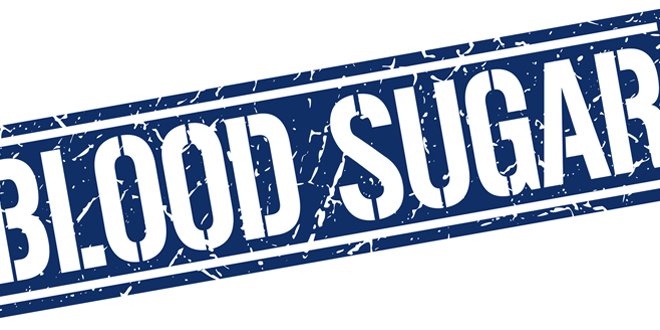What Are the Normal Blood Sugar Levels in Canada

Controlling your blood sugar levels is key to your overall diabetes management. Read on to learn about blood sugar levels in Canada.
What are the recommended blood sugar levels for people with diabetes and prediabetes in Canada?
The recommended blood sugar levels in Canada for most people with diabetes and prediabetes are as follows:
| Blood sugar before a meal | Blood sugar two hours after the start of a meal |
| 4 to 7 mmol/L | 5 to 10 mmol/L (or 5 to 8 mmol/L if A1C targets not being met) |
Read more about blood sugar targets in Canada here.

Are there different recommendations for blood sugar levels in other countries?
The recommended blood sugar level ranges in countries around the world are very similar. However, there are two different units of measurement that are used when referring to blood sugars, depending on where you live: millimoles per litre (mmol/L) and milligrams per decilitre (mg/dL).
The mmol/L measurement is used here in Canada, as well as England, Australia and China, while mg/dL is used in such countries as the United States, France, Japan, Israel and India.

To convert mmol/L to mg/dl, simply multiply by 18. For example, a blood sugar level of 5.0 mmol/L would mean a level of 90 mg/dL (5 x 18 = 90).
Here are blood sugar recommendations from some countries other than Canada:
| Country | Blood sugar before a meal | Blood sugar two hours after the start of a meal |
| India | 80 to 110 mg/dL (4.4. to 6.1 mmol/L) | 120 to 140 mg/dL (6.7. to 7.8 mmol/L) |
| United Kingdom | 4 to 7 mmol/L (72 to 126 mg/dL) | Type 1 diabetes: less than 9 mmol/L (162 mg/dL) Type 2 diabetes: less than 8.5mmol/L (153 mg/dL) |
| United States | 80 to 130 mg/dL (4.4. to 7.2 mmol/L) | Less than 180 mg/dL (10 mmol/L) |
Is diabetes diagnosed the same way in every country?
There are four methods of diagnosing diabetes, which are used around the world. They are:
- Fasting blood glucose level . This is a simple blood test done after you have not eaten for at least 8 hours. Your healthcare team will draw a sample of your blood and send it to a laboratory for analysis. In Canada, a blood glucose level that is 7.0 mmol/L or higher means that a person has diabetes. A level of 6.1 to 6.9 mmol/L indicates that someone has prediabetes.
- This test also involves analyzing a sample of your blood in a laboratory. A1C is measured as a percentage and reflects your average blood sugar over the past 2-3 months; in Canada, an A1C level of 6.5% or higher means that a person has diabetes. A level of 6.0 – 6.4% indicates prediabetes.
- Oral glucose tolerance test. This test measures your body's ability to use a type of sugar – called glucose – which is the body's main source of energy. The test is usually done in the morning, and you will be asked to fast (not eat anything) the night before. A blood sample will be taken when you arrive: this is your fasting blood glucose value and provides a basis for comparing other glucose values. After your blood is drawn, you will be asked to drink a liquid containing 75 grams of glucose. After two hours have passed, your healthcare team will draw your blood once again, and both blood glucose results will be analyzed in a laboratory. In Canada, a blood glucose level of 11.1 mmol/L or higher two hours after you've consumed the sweet drink means that a person has diabetes. If your level is between 7.8 – 11.0 mmol/L, this indicates that you have prediabetes.
- Random blood glucose test.If your healthcare team suspects you may be at high risk for diabetes, they may draw your blood to be tested when you visit them, regardless of whether you have been fasting or have eaten recently. In Canada, if the laboratory test confirms a blood glucose level of 11.1 mmol/L or higher, it means that a person has diabetes.

Are some Canadians at higher risk for elevated blood sugar levels than others?
You may have a higher risk for elevated blood sugars and type 2 diabetes if you:
- Are 40 or years of age or older
- Have a close relative (for example, a parent, brother or sister) with diabetes
- Are of African, Arab, Asian, Hispanic, Indigenous or South Asian descent
- Are overweight (especially if you carry excess weight around your stomach)
- Have been diagnosed with prediabetes

Some medical conditions can also increase your risk of type 2 diabetes, such as:
- High blood pressure or cholesterol levels
- Polycystic ovary syndrome
- Psychiatric disorders (such as schizophrenia, depression or bipolar disorder)
- Sleep apnea
Read more about diabetes risk factors here.
How does Canada compare to other countries in terms of numbers of people with diabetes?
According to the World Health Organization, approximately 422 million people around the world have diabetes. The prevalence varies somewhat among countries, though:
- 3 million people in Canada (8% of the population) have diabetes
- 4 million people in the United Kingdom (6% of the population) have diabetes
- 69 million people in India (5% of the population) have diabetes
- 30 million people in the United States (9% of the population) have diabetes
What Are the Normal Blood Sugar Levels in Canada
Source: https://www.diabetescarecommunity.ca/living-well-with-diabetes-articles/blood-sugar-levels-in-canada/
0 Response to "What Are the Normal Blood Sugar Levels in Canada"
Post a Comment